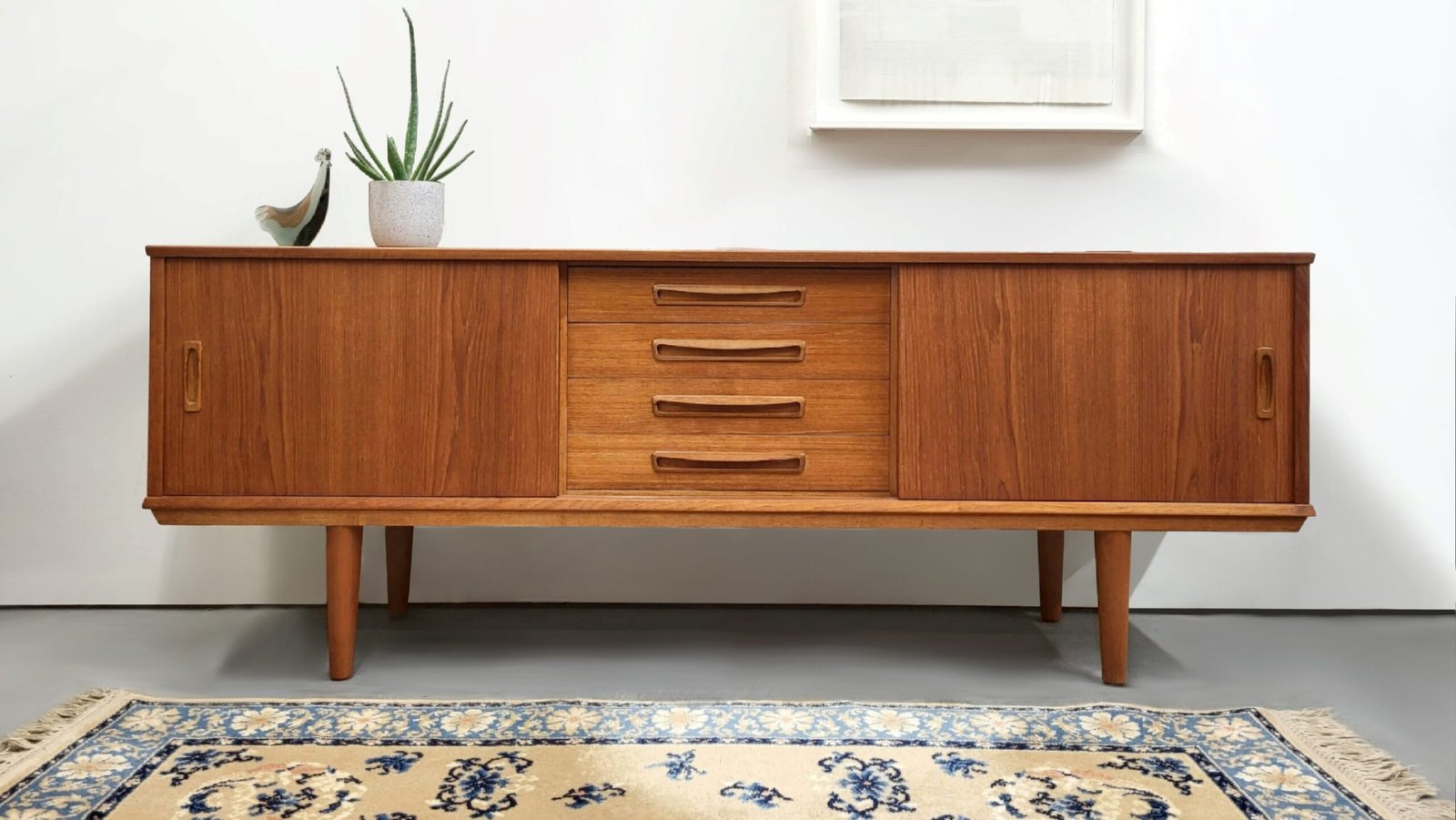
Origins
Mid-century modern furniture emerged as a defining movement in the world of interior design during the mid-20th century, characterized by its emphasis on clean lines, organic forms, and innovative materials. Originating out of the aftermath of World War II, this design ethos sought to redefine the aesthetic landscape by marrying functionality with elegance.
At its core, mid-century modern (MCM) design was a response to the post-war climate of optimism and innovation. Visionary architects and designers such as Arne Jacobsen, Charles and Ray Eames, and Eero Saarinen played pivotal roles in shaping the movement, introducing iconic pieces that have since become timeless classics.
On a more philosophical level though, mid-century design was representative of complete change in the way materials were regarded by designers, manufacturers and consumers. This happened as the the world began to shed the frivelous design ideas of the past, when trends and ideals preferred oppulent details carved into large and excessive furniture pieces. All that excess was viewed differently as the world emerged from the second of two devastating world wars, with much of the world struggling to recover from massive destruction and loss of life. It begged the question: why do we build such unefficient furniture when people can’t afford it? And why waste so materials when so much of the world has been destroyed by war?
Finally, the advancements of technology changed what was possible on factory floors and in designers workshops.
Defining Features
One of the hallmarks of MCM furniture was its innovative use of materials and manufacturing techniques. Designers explored new materials such as molded plywood, fiberglass, and teak wood, pushing the boundaries of traditional craftsmanship and paving the way for the creation of iconic pieces like the Eames Lounge Chair and Ottoman, the Egg Chair by Arne Jacobsen, and the Saarinen Tulip Chair.
The aesthetic principles of mid-century modernism emphasized simplicity, functionality, and a harmonious integration with nature. Furniture designs featured sleek, uncluttered lines, organic shapes inspired by the natural world, and an emphasis on ergonomics and comfort.
Impact
The MCM movement reached its peak of popularity in the 1950s and 1960s, becoming synonymous with the aspirational lifestyle of the era. However, by the late 1960s and early 1970s, shifting cultural and design trends led to a decline in its prominence.
Despite this decline, the legacy of MCM furniture endured, experiencing a resurgence in popularity in the late 20th and early 21st centuries. Today, mid-century modern design continues to captivate and inspire homeowners, interior designers, and collectors alike, its timeless elegance and enduring appeal transcending the constraints of time and trend.
At Full Circle Furniture, we specialize in refinishing and rebuilding MCM furniture, and we usually have at least a few stunning examples of mid-century modern furniture. Go check out our inventory and see for yourself!

